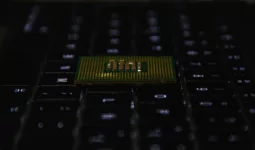Typically, and this is true of much of the quantum computing research I’m currently following, a development entity will create a proof-of-concept part at great cost. Once the concept is proven, the developer will try to figure out how, and if, the part can then be manufactured at scale. In contrast, Intel’s advanced silicon spin part, code-named “Tunnel Falls,” is being developed to be manufactured potentially giving it a faster time-to-market because that very long second step is baked in upfront.
So, it won’t be the first company that gets quantum computing to work that will win. It will be the first company that can manufacture and sell the result that will win, and Intel is taking a big risk to get that faster time-to-market once the part becomes viable.
Let’s chat about Intel’s quantum chip this week.
The benefit of using existing science
When you have a unique part and new science, unless it is developed collaboratively across graduate schools, the people you need to spin up on the technology will have difficulty doing so because they lack the tools to do so. But if you can use existing fabrication technologies, schools have access to that and can begin to spin up educational and developmental programs that help assure that when the part is ready, the world, and particularly developers, will be equally ready to supply solutions for the platform once it is finalized.
This also allows Intel to work from knowledge strength in that it already knows very well how to fabricate parts using existing technology, and by using that technology on this new quantum part, Intel sidesteps what otherwise might have been a very long learning curve.
Intel’s first public quantum processor is only 12 qubits and that is a far cry from the thousands of qubits that will be required for a useful quantum computer. However, these parts can be combined, and Intel’s timeline to get to higher numbers and a viable machine are the same as most others and in the 2030+ timeframe.
The difference potentially being that when Intel gets to this full capability, the result will be manufacture-ready while others will still need to take what they have learned and then design a part that can be manufactured.
Intel already has a 95% yield rate across wafers, which is very good for a brand new part and relatively new underlying technology, and each wafer can contain up to 24,000 quantum dot devices. These 12-dot devices can be used from four to twelve qubits that can be isolated for experimentation and learning.
One other advantage to this silicon spin approach to quantum processors is that, since they are based on transistors, they are up to 1 million times smaller than other qubit types which should significantly help with scaling out solutions. Firms like Nature Electronics have embraced Intel’s approach and agree that “Silicon may be the platform with the greatest potential to deliver scaled-up quantum computing.
Wrapping up and what’s next:
Intel has taken an interesting approach to quantum computing by developing in parallel a way to rapidly get the result into fabrication at scale, something that could take other firms not similarly focused decades to accomplish.
Going forward, Intel plans to continue to ramp performance on Tunnel Falls and better integrate it into its full quantum stack and the Intel Quantum Software Development Kit (SDK). Intel’s next-generation chip, based on Tunnel Falls, is expected in 2024. Then Intel plans to partner with additional research organizations globally as it gets closer and closer to having a unique advantage in the coming quantum computing wave.
Sometimes, the path less traveled is also the fastest path to the goal. With Tunnel Falls, Intel is exploring the path less traveled, but it could result in a significant competitive advantage once it reaches a viable number of qubits in the 2030+ timeframe.








